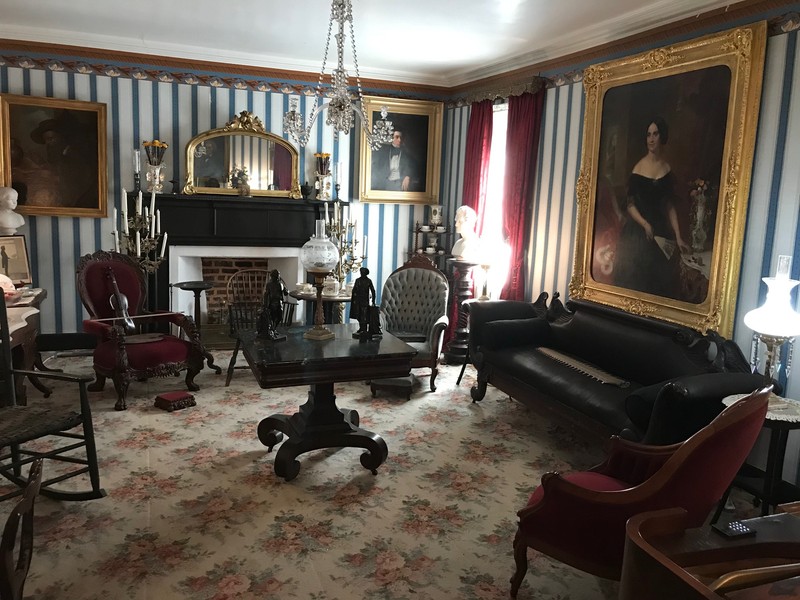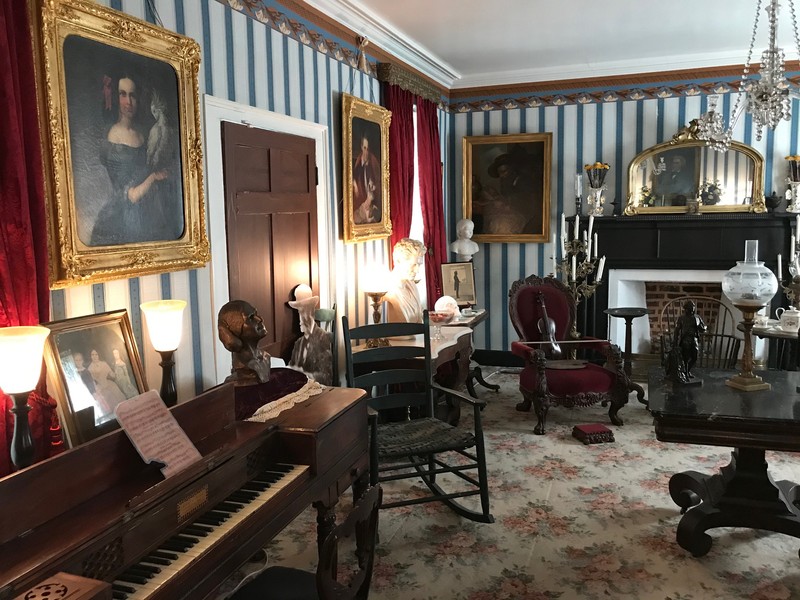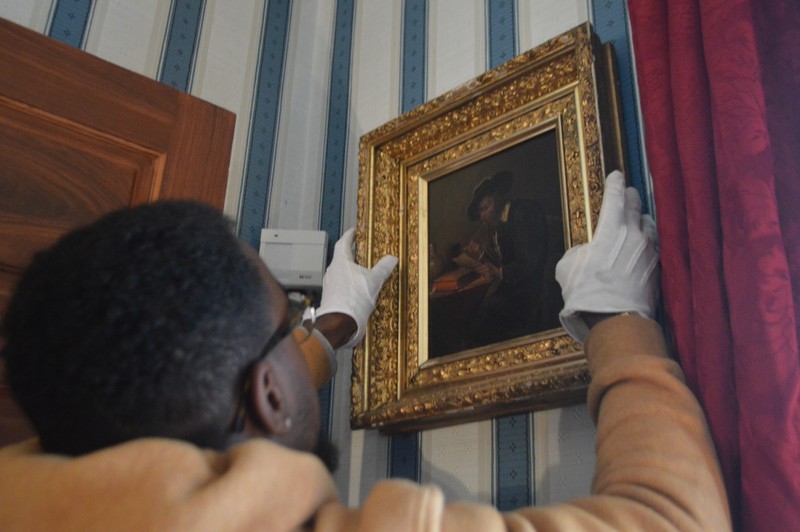Fort Hill-Parlor
Introduction
Author-Uploaded Audio
Listen to a narration of this entry's description by Fort Hill User.
Text-to-speech Audio
Images
Parlor at Fort Hill

Floride Calhoun's pianoforte and Thomas Clemson's rocking chair

Maintenance and Preservation is an ongoing effort

Parlor-wide view
.jpg)
Backstory and Context
Author-Uploaded Audio
Listen to a narration of this entry's description by Fort Hill User.
Text-to-speech Audio
Thomas Green Clemson IV was born on July 1st, 1807 and was the son of Thomas Green Clemson III, a Quaker merchant, and Elizabeth Baker, the daughter of a prominent Episcopalian family. Little is known about Mr. Clemson's early education, but during his formative years he excelled in the sciences and mathematics. At the age of 16, Clemson applied to West Point and the then Secretary of War, John C. Calhoun, "received a letter of recommendation from the Pennsylvania delegation on Clemson's behalf" (1). At the time, the most advanced scientific education could only be obtained in Europe. In 1826, Mr. Clemson began a tour of Europe before enrolling at the Paris School of Mines and later studied at the Sorbonne Royal College of France in Paris. The young Clemson was nicknamed "the giraffe" by his French classmates because of his significant height, standing at six foot six inches tall.
In the spring of 1838, Clemson met Anna Maria Calhoun in Washington, D.C. Anna Maria was twenty-one years old and Clemson was ten years her senior. After a courtship of only six months, the couple was married here in the parlor of Fort Hill. The newly weds spent the first two years of their marriage in Philadelphia before moving in with Anna's family at Fort Hill. Their first three children, a daughter, unnamed, who died in infancy, a son, John Calhoun Clemson, and another daughter, Floride Elizabeth, were all born at Fort Hill. Floride Elizabeth and her brother would survive into adulthood and their childhood portraits now hang in the parlor.
In 1844, John C. Calhoun, who had recently been named Secretary of State for President John Tyler, aided in the appointment of his son-in-law as chargé d'affaires or diplomat to Belgium. This made Clemson the highest-ranking ambassador from the United States to Belgium. The Clemsons lived in Belgium from 1844 to 1852. King Leopold I of Belgium shared Mr. Clemson's interest in art, and later "awarded Clemson the Order of Leopold medal" which is on display at Fort Hill (1). Mr. Clemson also received the Leopold Chair in the parlor as a gift from the king during this time.
After leaving Belgium, the Clemson family moved to a home in Maryland where they would live while Mr.Clemson served as the Superintendent of Agricultural Affairs from 1860-1861. At the outbreak of the Civil War, Mr. Clemson chose to resign his post and join the Confederacy with his son. Clemson was fifty-four years old when he enlisted in the Confederacy on May 7th, 1863 and was assigned to the Army of the Trans-Mississippi Department. On May 18th, 1866, after the conclusion of the Civil War, Mr.Clemson "requested and received a pardon from President Andrew Johnson" (1). He returned to Pendleton and from 1868 to 1871 acted on behalf of his mother-in-law's estate. He signed freedmen contracts with freedmen and women who were employed at Fort Hill. These contracts, "which spelled out some 10 to 15 articles of agreement, were similar to other labor contracts of the era" (1).
In the summer of 1871, the Clemson family suffered tremendous tragedy. Their daughter, Floride Clemson Lee, died on July 23rd, 1871, at twenty-eight years old of consumption. She left behind a one-year-old daughter, Floride Isabella Lee, the Clemson's only grandchild. On August 10th, 1871, John Calhoun Clemson was killed in train wreck in Oconee, South Carolina, only seventeen days after his sister's death. Having lost their only two surviving children, Anna Maria and Thomas Green Clemson retired to Fort Hill in 1872. Three years later, Anna Maria died of a heart attack at fifty-eight. Her will, while not specifically mentioning a desire to create a college out of Fort Hill's land, previous communications between the couple indicated their desire that a college would be built on the land she inherited from her family.
In the last thirteen years of Mr. Clemson's life, he "set out to establish, in the drafts of his will, the type of scientific institution" that he desired to be built out of his wife's land. His last will and testament ordered that his wife's land and a sum of $80,000 dollars be given to the state of South Carolina in the interest of constructing an agricultural college in the Upstate.
Sources
- “Thomas Green Clemson | Clemson University, South Carolina,” accessed May 21, 2020, https://www.clemson.edu/about/history/bios/thomas-g-clemson.html.
images courtesy of Fort Hill
images courtesy of Fort Hill
images courtesy of Fort Hill
